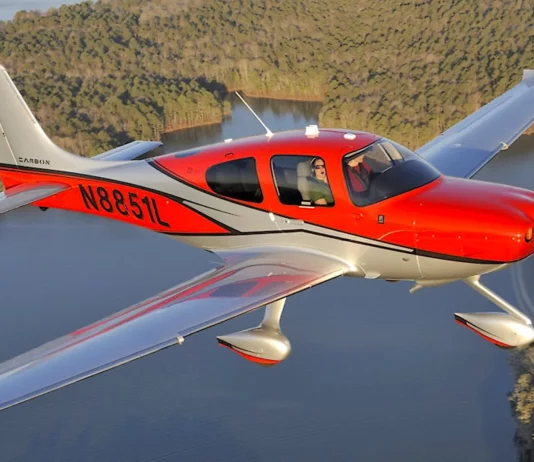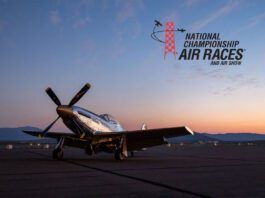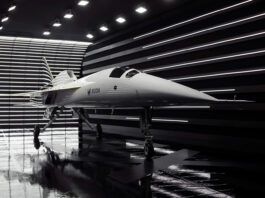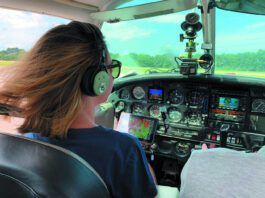Briefing: November 2012
The IMC Club International has announced creation of a Special Membership Group within the IMC Club called the Inner Marker Circle. IMC Club International president Radek Wyrzykowski says he hopes the group will become an aviation safety cult. Members will be granted a special membership card and automatically enrolled into a drawing for an annual subscription to IFR Magazine, an IMC Club BrightLine Flight Bag, and a $1000 Proficiency Scholarship to be awarded annually at AirVenture Oshkosh.
Briefing: October 2012
The FAA told air traffic controllers to stop using a procedure that allows airplanes to land and take off in the opposite direction from normal, after a mix-up with three commuter jets in Washington on July 31. The FAA didnt blame the incident on the procedure, however, saying it was due to a communication lapse between Reagan Tower and Potomac Approach. Acting FAA administrator Michael Huerta emphasized that, At no time were the aircraft on a head-to-head course and the aircraft remained at different altitudes.
Briefing: September 2012
An FAA program for non-punitive reporting of safety concerns among air traffic controllers needs significant improvements before it can become effective, according to the Transportation Department Office of Inspector General (OIG). The safety reports are meant to reveal safety issues while protecting the controllers who submit them, but the OIG says reports have been accepted that address air traffic controller conduct issues, rather than performance concerns. These include controllers falling asleep, viewing videos while on…
Briefing: August 2012
Under the Unleaded Avgas Transition-Advanced Rulemaking Committee (ARC)s recommendations, it will be at least 11 years before a suitable replacement (or replacements) for 100LL is approved. Total cost could reach $73 million with $60 million having to be approved by Congress. Despite the many pitfalls outlined in the report, the authors try to strike a hopeful tone: We are in fact very encouraged that a satisfactory solution will be deployed in a timely manner and…
Briefing: October 2013
EAA hosted its annual AirVenture event at the end of July, highlighted by the first public flight of the Terrafugia Transition flying car, the first U.S. demo by Swiss Jetman Yves Rossy with his one-of-a-kind jet-powered wingsuit, and the debut of the ready-for-production HondaJet. Great weather helped draw big crowds on the grounds and in the air, adding to a sense the economic doldrums may be lifting at last. Diesels were popular, with Redbird, Glasair, and Cessna all reporting on programs. Icon announced the FAA okayed their weight exemption, clearing the way for the long-anticipated amphibian to proceed to market, and raising hopes for other LSA manufacturers seeking FAA flexibility. The air show was popular despite the lack of military displays due to the sequester, with new JumboTrons adding to audience engagement. EAA also hosted its first-ever Job Fair, drawing big crowds and an expectation of a return next year.
Briefing: September 2013
Anyone looking for a career in an airline cockpit will be affected by the FAAs new ruling on first officer requirements. The 2009 Colgan Air crash prompted Congress to demand the new rules. All first officers who fly for passenger and cargo airlines now will be required to hold an aircraft type rating, plus an ATP certificate, which requires a minimum 1,500 hours total time and a minimum age of 23, with several available exemptions. Pilots may be able to qualify for restricted privileges if they are at least 21 years old and have a military background or a bachelors degree from an aviation program. The rule also requires all ATP applicants to have logged at least 50 hours of multi-engine time and to complete a new FAA-approved training program.
Briefing: August 2013
For years, the general-aviation community has worried over how to replace 100LL. Finally, in June the FAA announced that it wants to see proposals for new fuels and will start a process to test them. The traditional leaded fuel is under attack from the Environmental Protection Agency and others worried about the toxins released into the atmosphere when it combusts. Plus, the sources for the fuel are considered uncertain, especially as the demand falls year…
Briefing: July 2013
Pilatus, the Swiss company best known for their versatile PC-12 turboprop, announced in May they are working on their first jet aircraft. The PC-24 is powered by two Williams turbine engines and will be able to use short and even unpaved runways. The cabin can be fitted with six to ten seats. A big cargo door will be standard. The company has designed its own Advanced Cockpit Environment system, which aims to reduce workloads for…
Briefing: June 2013
Last month, with officials in Washington unable to agree on a budget to avert the stalemate called sequester, 149 contract towers across the country were told to shut down. But when lawsuits arose from all corners, the plan was put on hold. Another plan to force all of the nations air traffic controllers to cut back their hours produced nationwide backups and howls of dismay that quickly drove Congress to pass a new law in…
Briefing: December 2013
Pilots always complain about the price of fuel--but if they could buy avgas for $1 a gallon, would that really change their flying habits? That was the question the owners of Redbird Skyport, in San Marcos, Texas, set out to answer in October. Sales soared to 30 times normal, their staff wore down, and the supply chain started to suffer hiccups. They ended the experiment two weeks early, after collecting reams of data from pilot…
Briefing: November 2013
The first FAA-approved commercial drones launched on September 12 from a ship in the Chukchi Sea, off the North coast of Alaska. The ScanEagle unmanned aircraft system weighs just 44 pounds and has a 10-foot wingspan. It will conduct surveys of ice and marine mammals in the vicinity of drilling rigs. The UAS will be allowed to fly 24 hours a day at heights up to 2,000 feet and out of the line of sight of operators on the ground. The U.S. Air Force also said in September it has successfully flown the first of its mothballed F-16 fleet as a drone, which will be used for target practice.
Briefing: April 2014
After almost five years of quiet at the Mooney factory in Kerrville, Texas, the assembly line re-booted in February and the classic Acclaim Type S was back in production. The company has risen, yet again, thanks to a fresh infusion of cash from new investors, and new corporate leadership. The new Acclaim models will feature the TSIO-550-G turbo-normalized engine by Teledyne Continental Motors and an upgraded Garmin G1000 integrated avionics suite.






